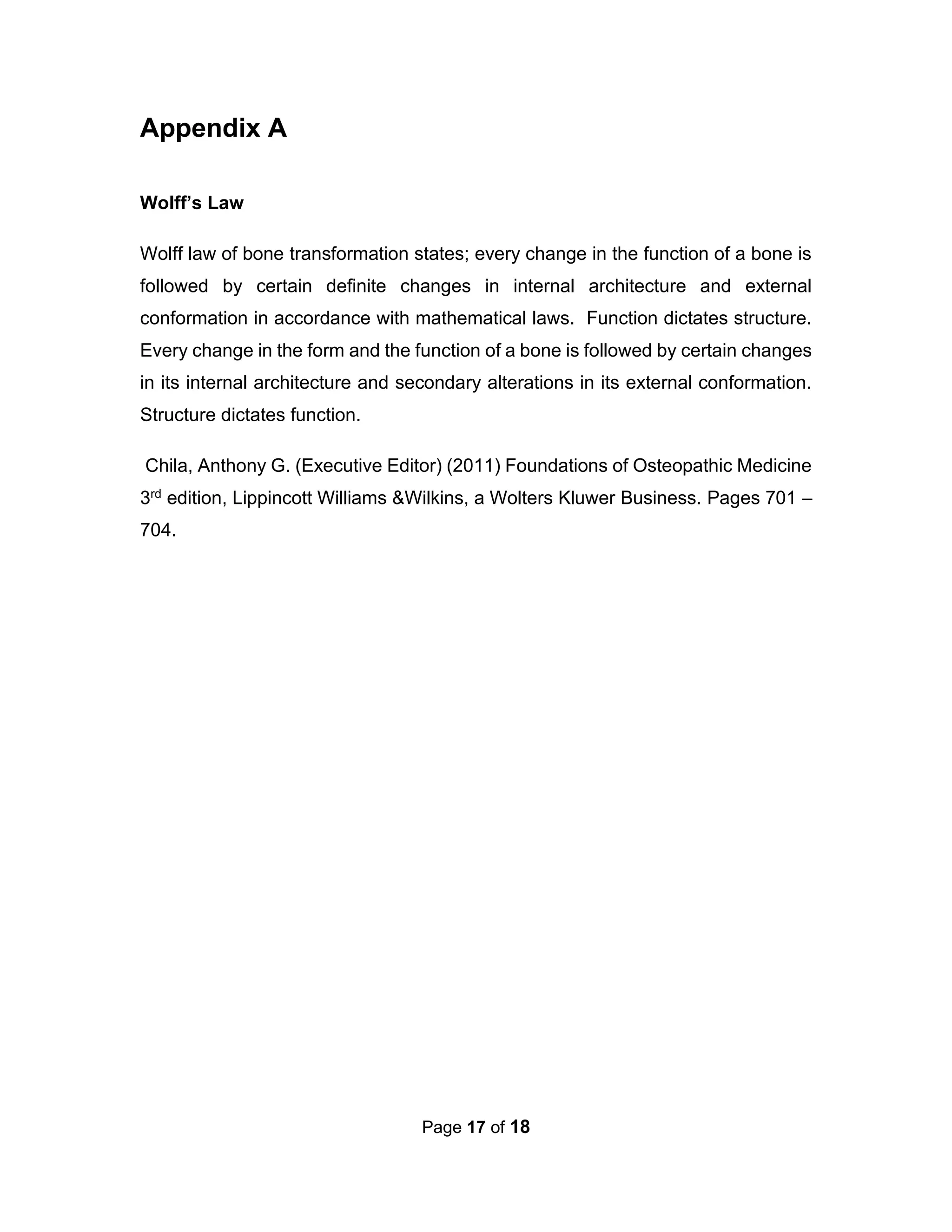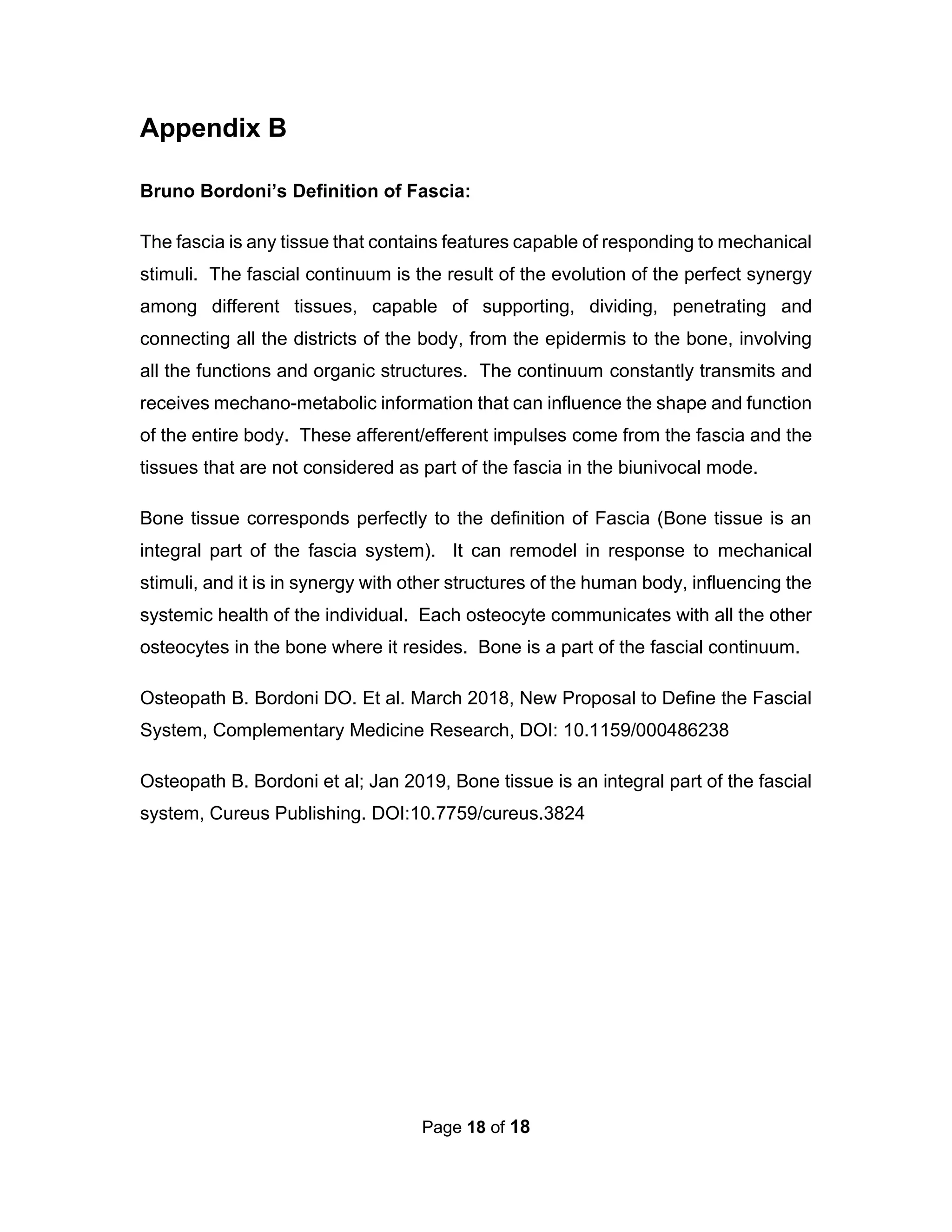This document discusses bone mechanics and osteopathic techniques for restoring bone's elastic response. It explores bone architecture, types, crystals and their ability to absorb energy from forces. When bones repeatedly experience forces beyond their elastic limit, microfractures can occur and the bone loses its elasticity. Osteopathic techniques like myofascial release and craniosacral methods may help restore bone's elastic response by increasing biotensegrity and homeostasis in the body. Treating bone like fascia acknowledges their interconnection and bone's ability to regain motion and elasticity through manual therapy.
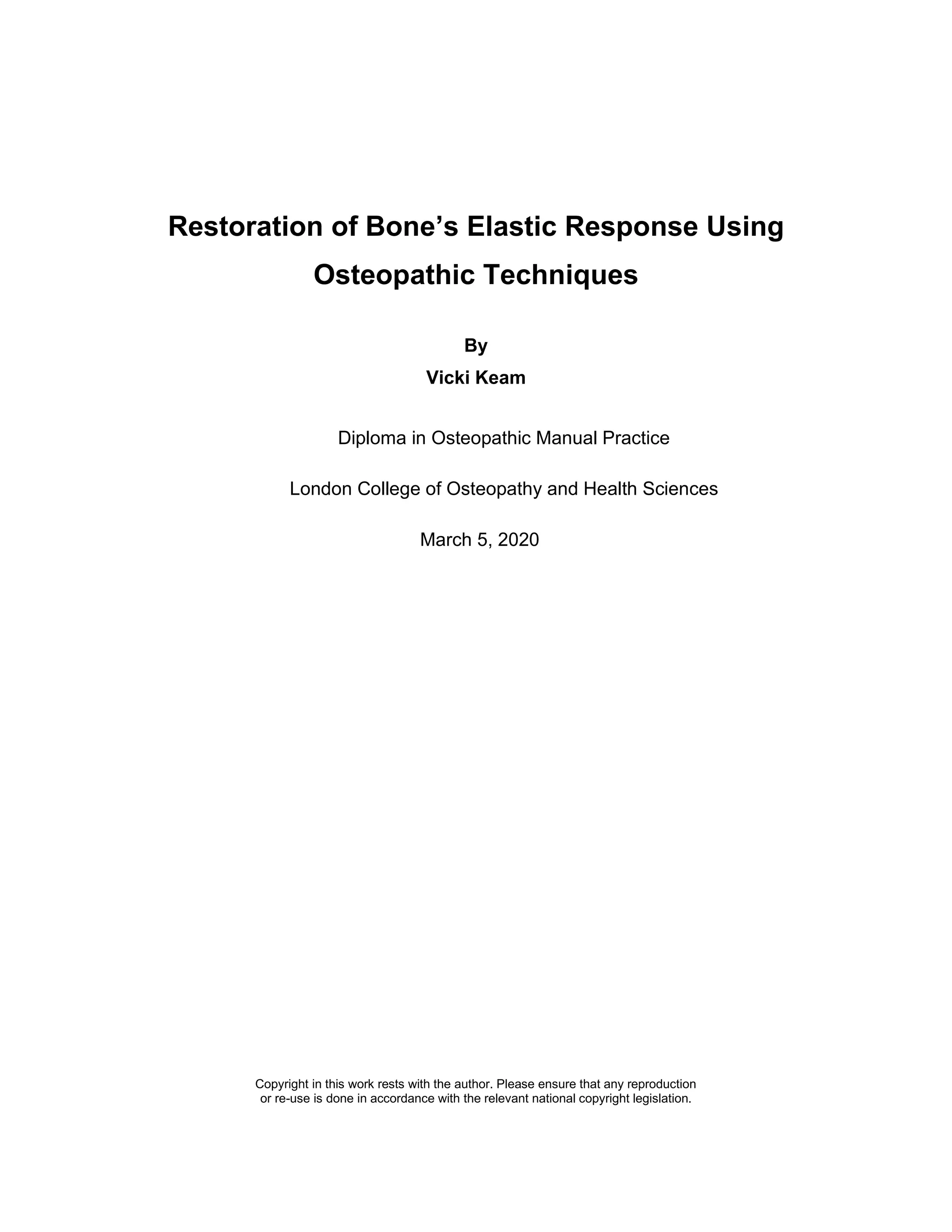
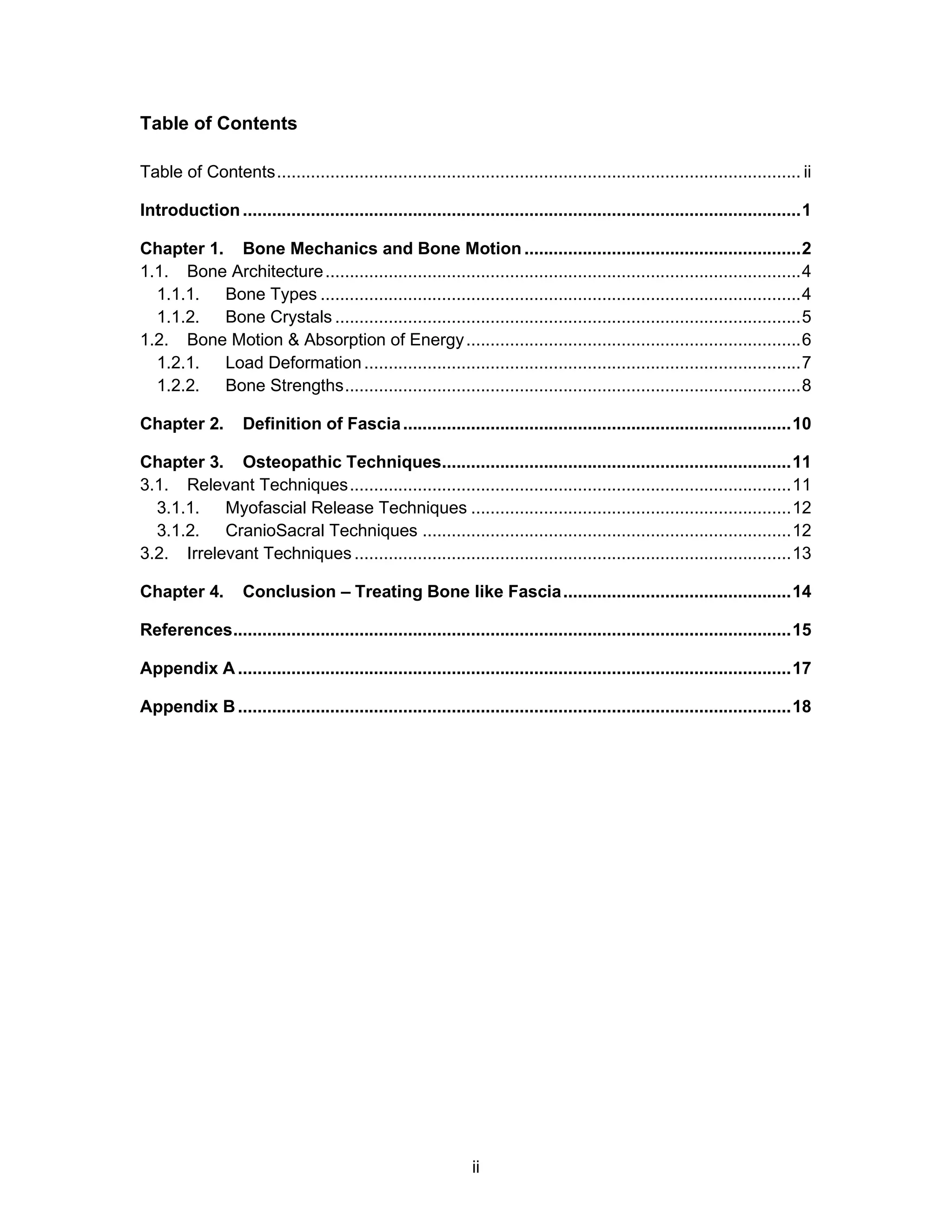
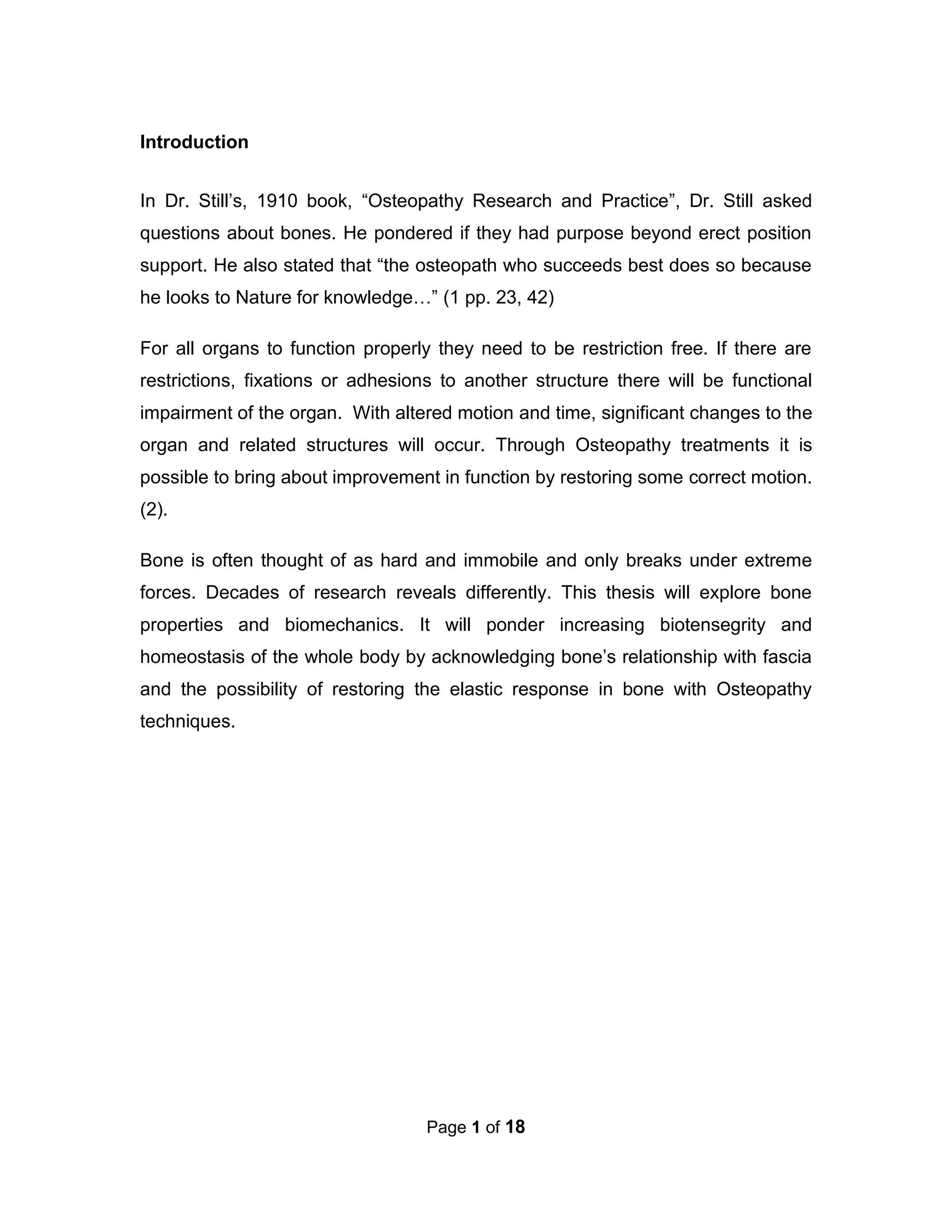
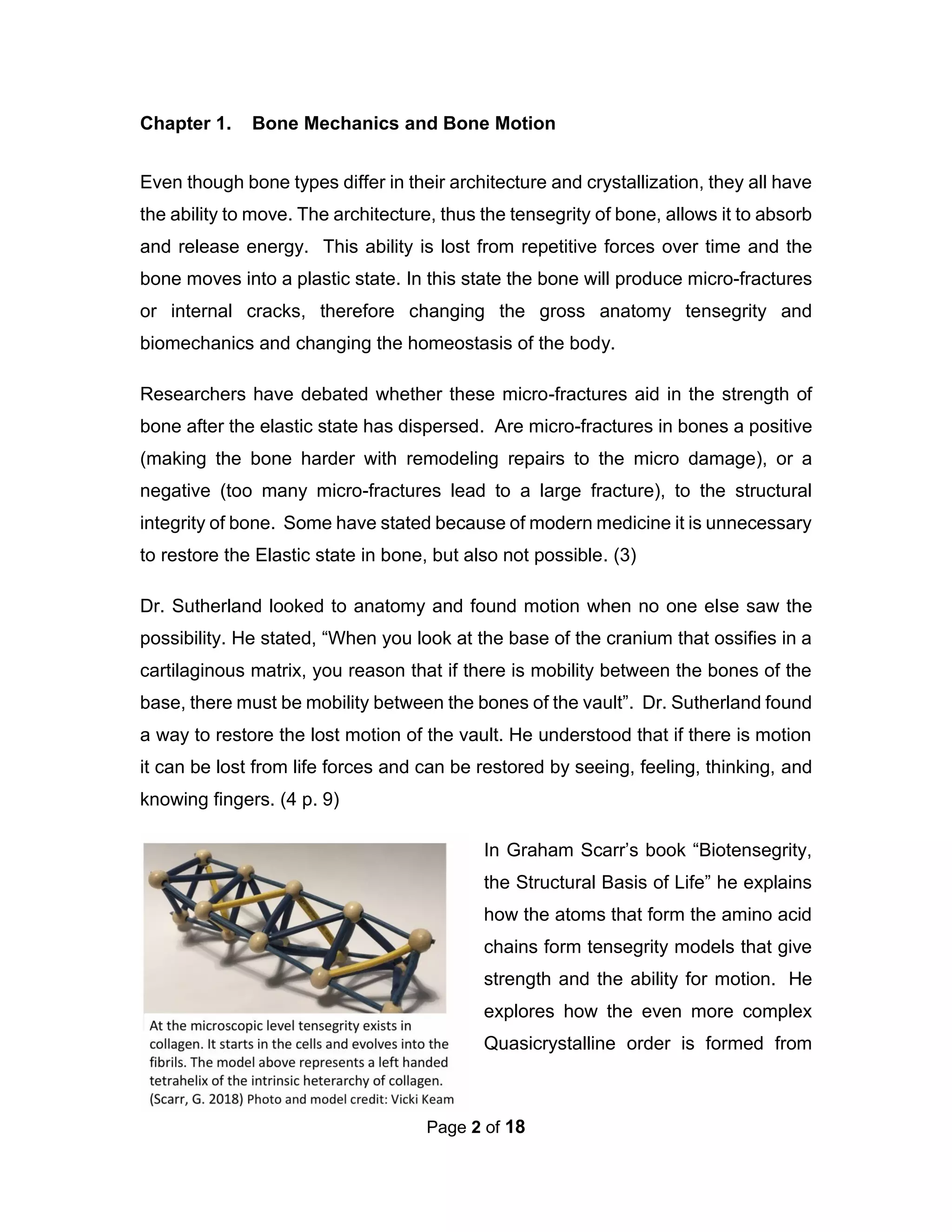


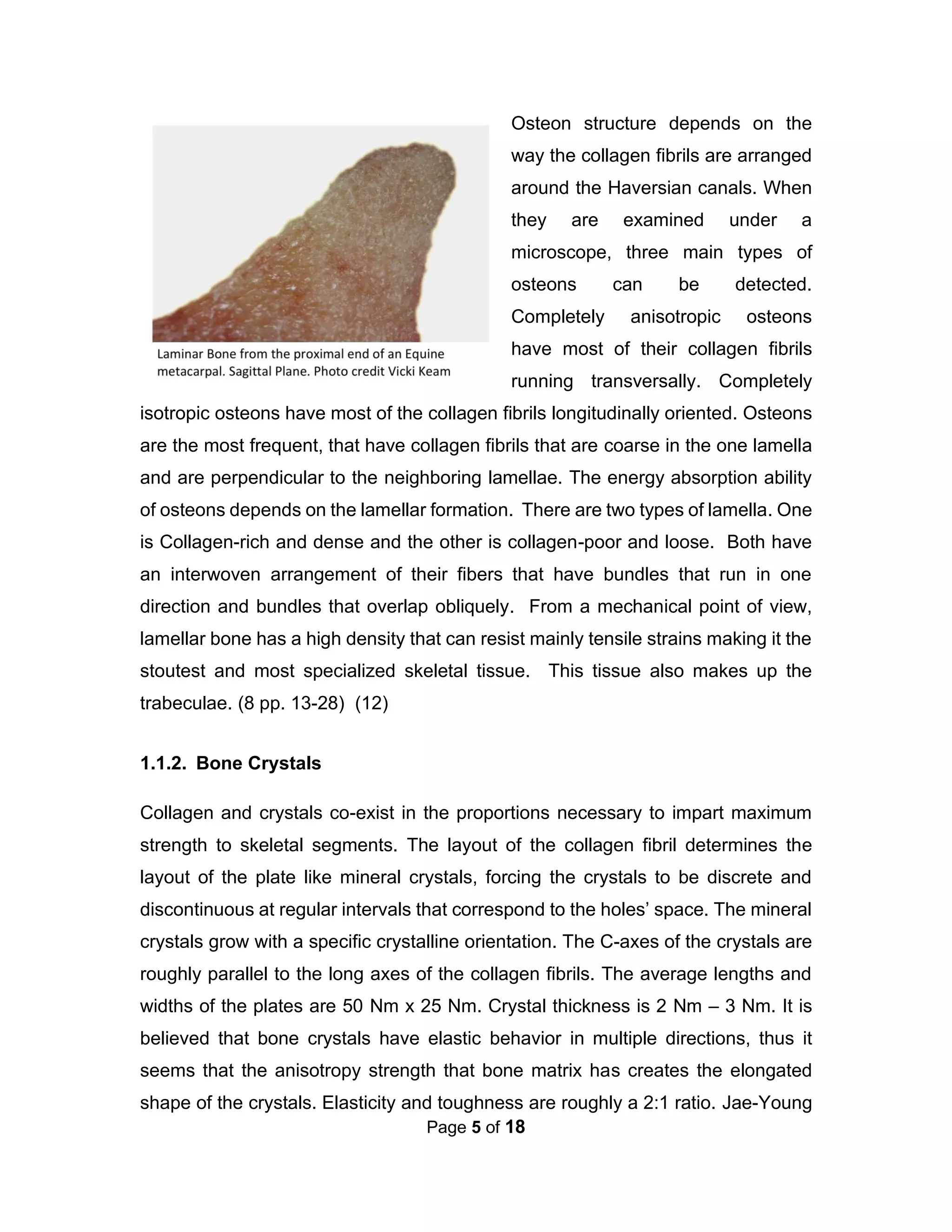
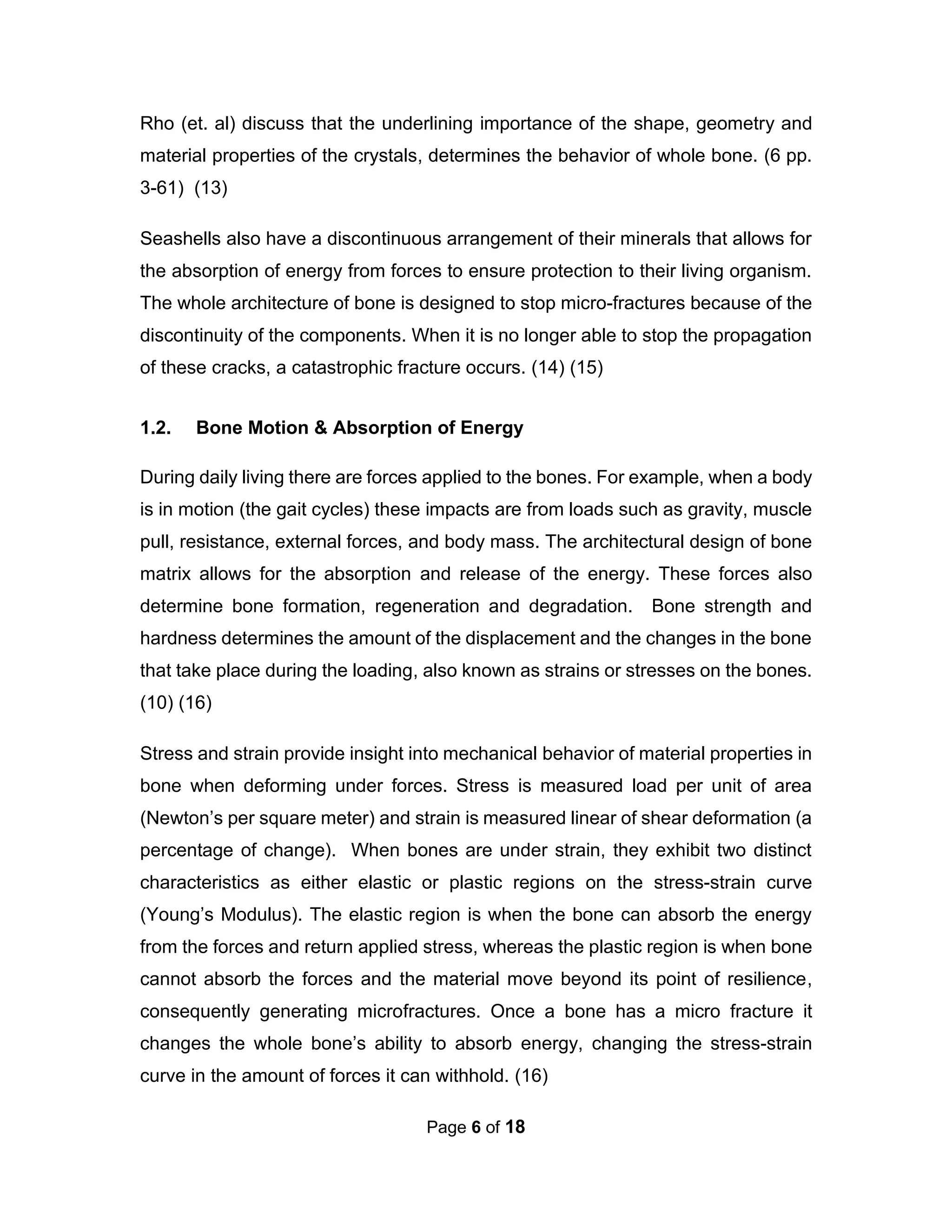
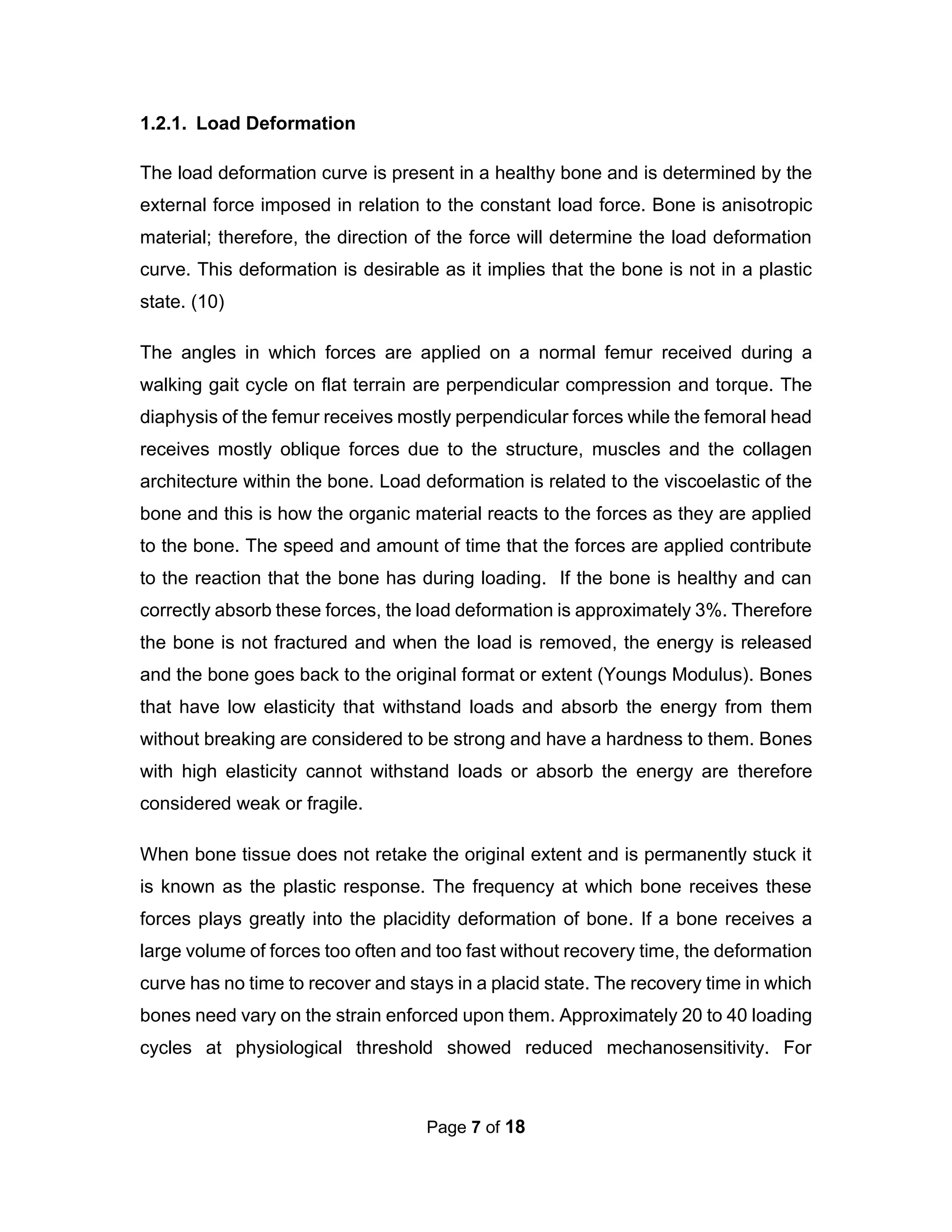
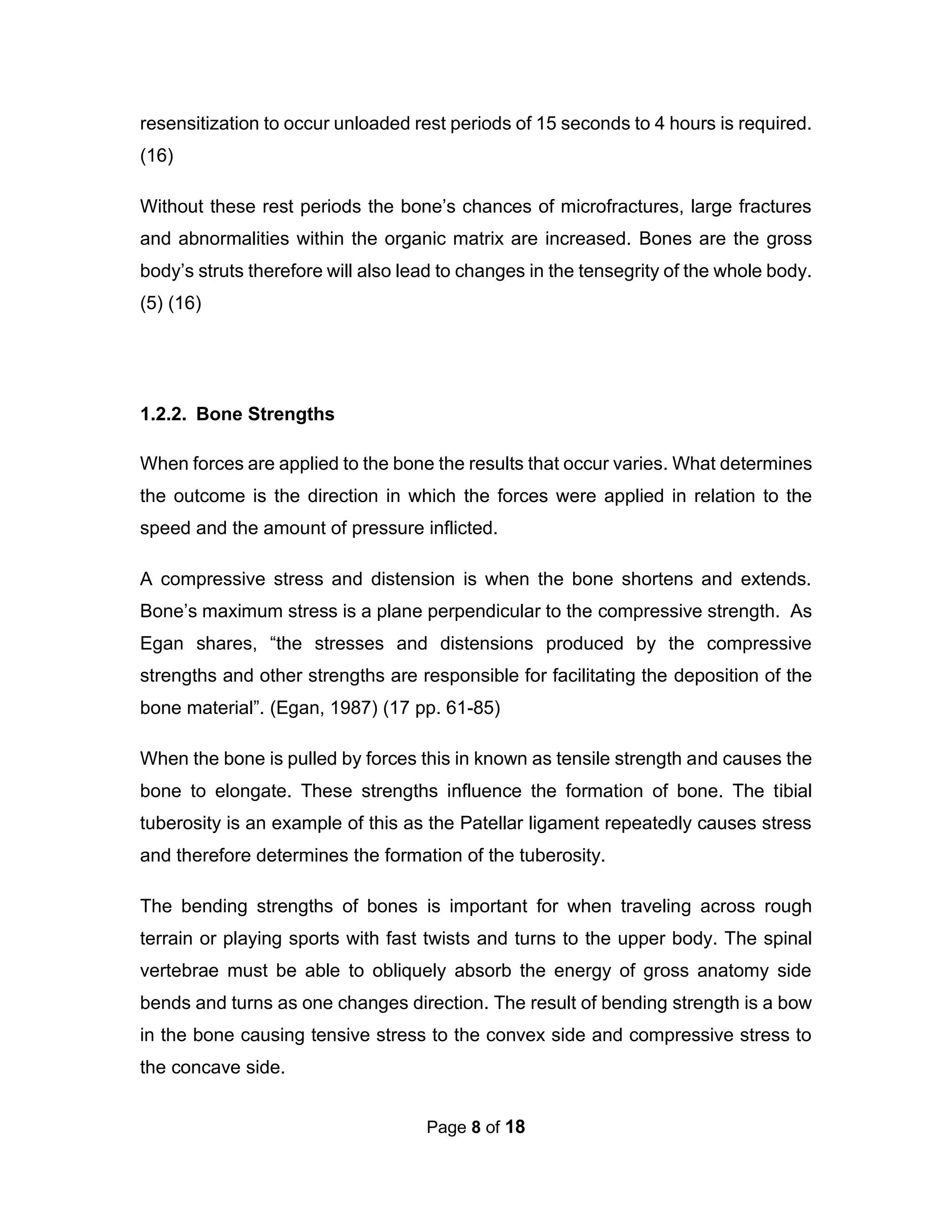
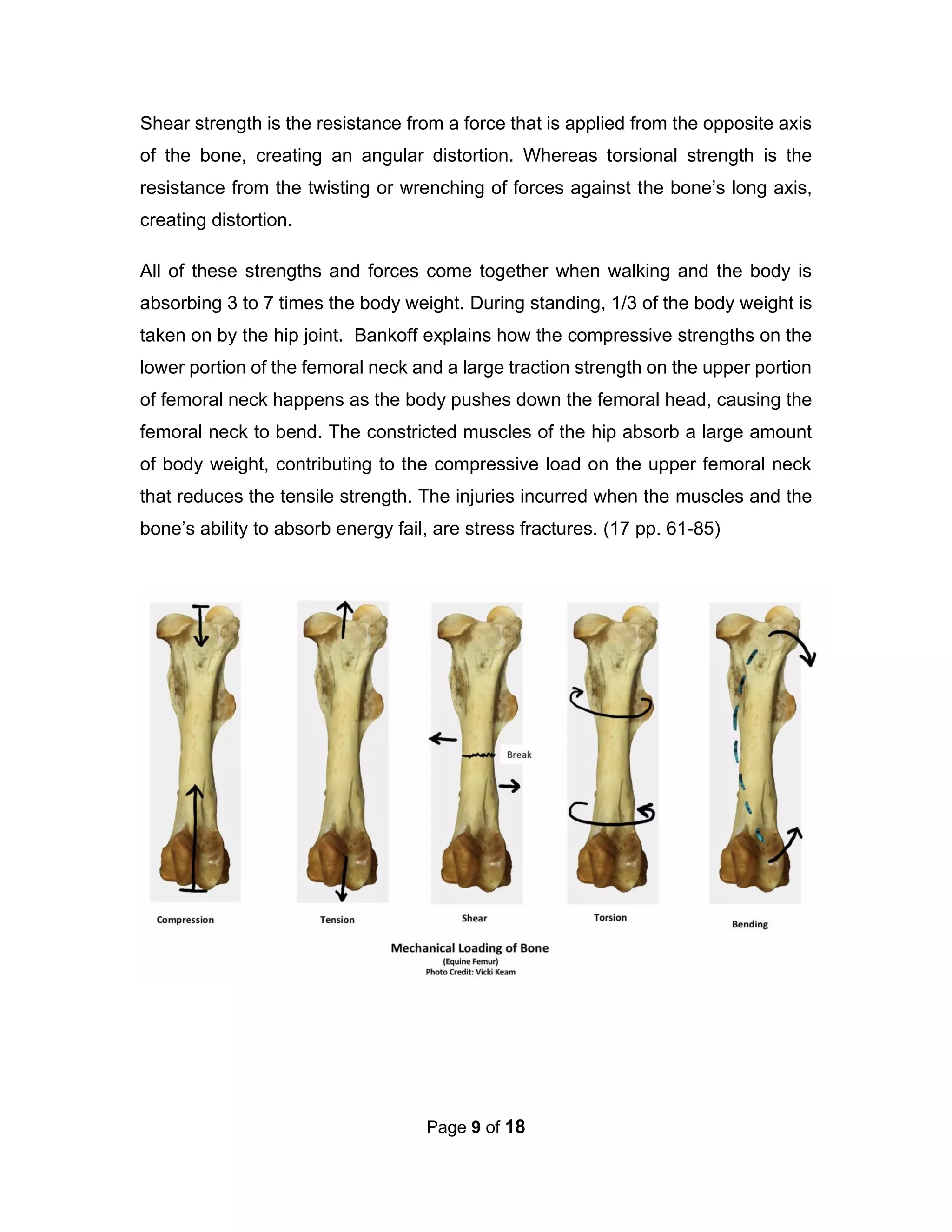
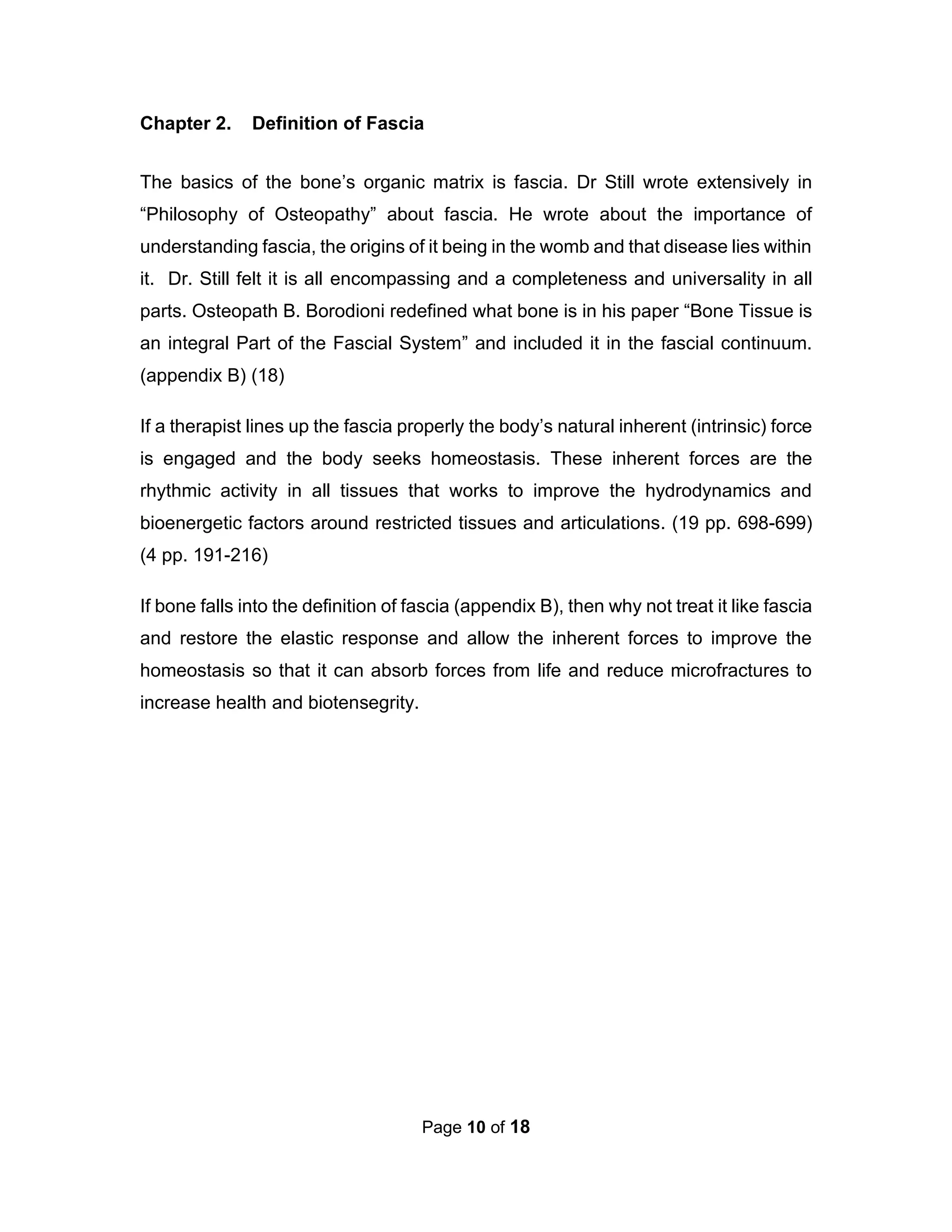
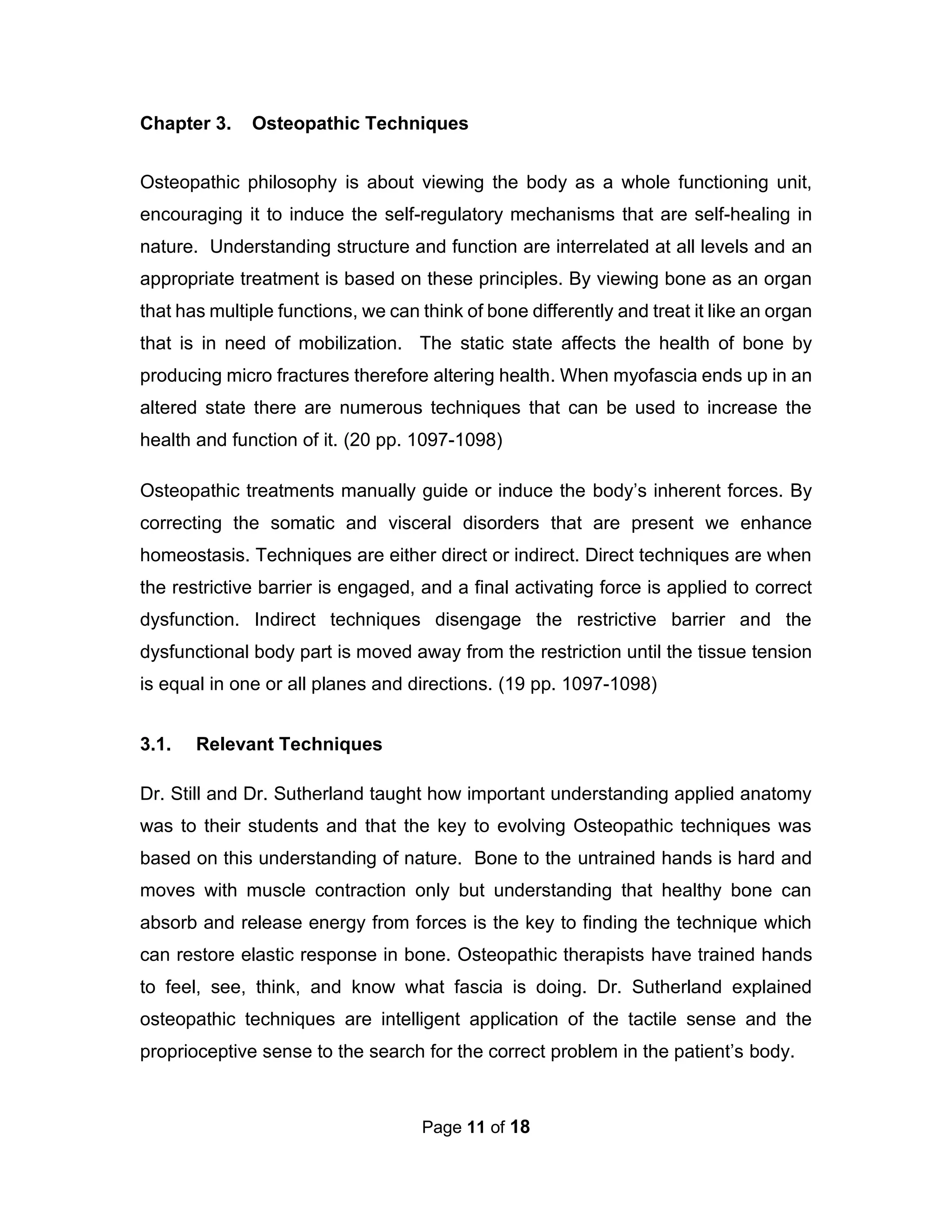
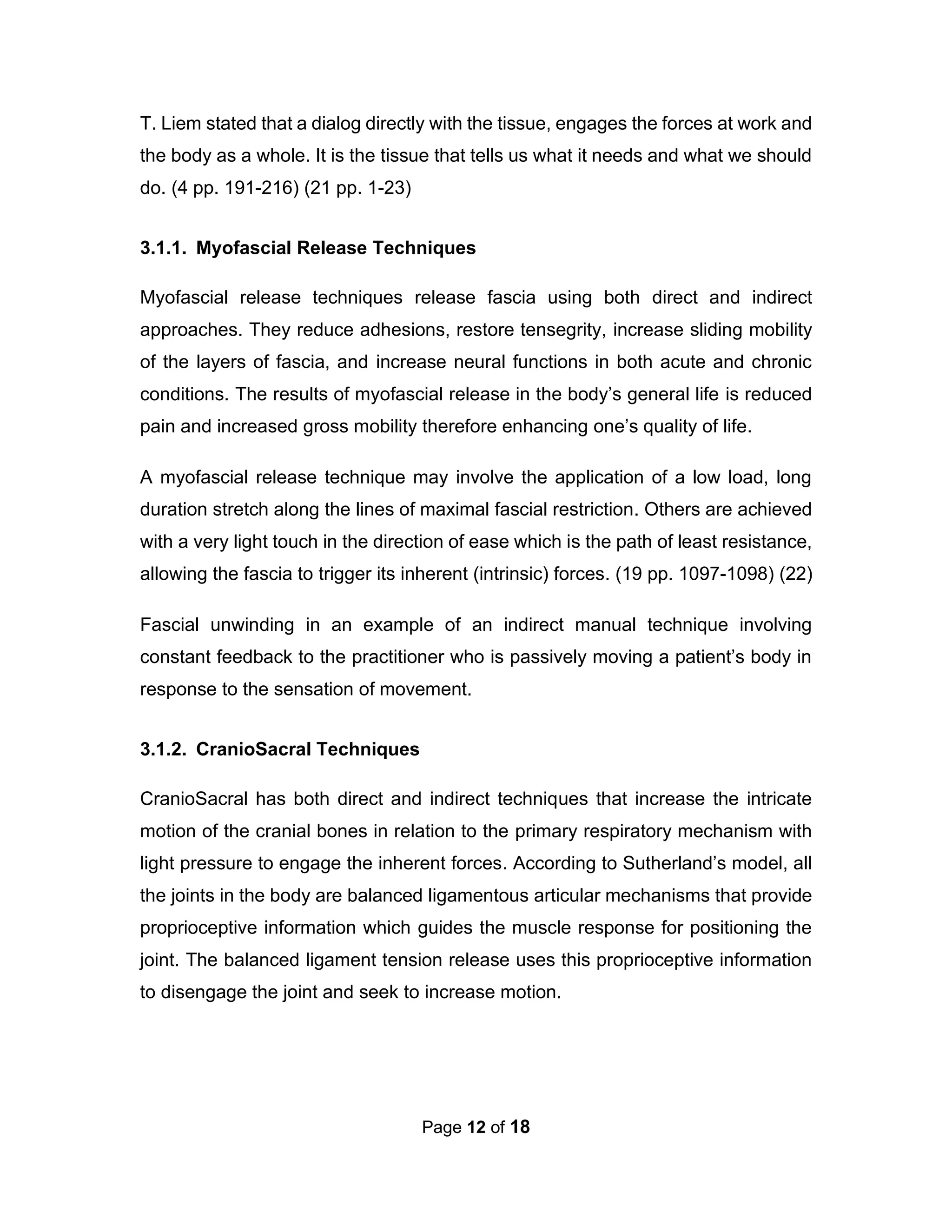
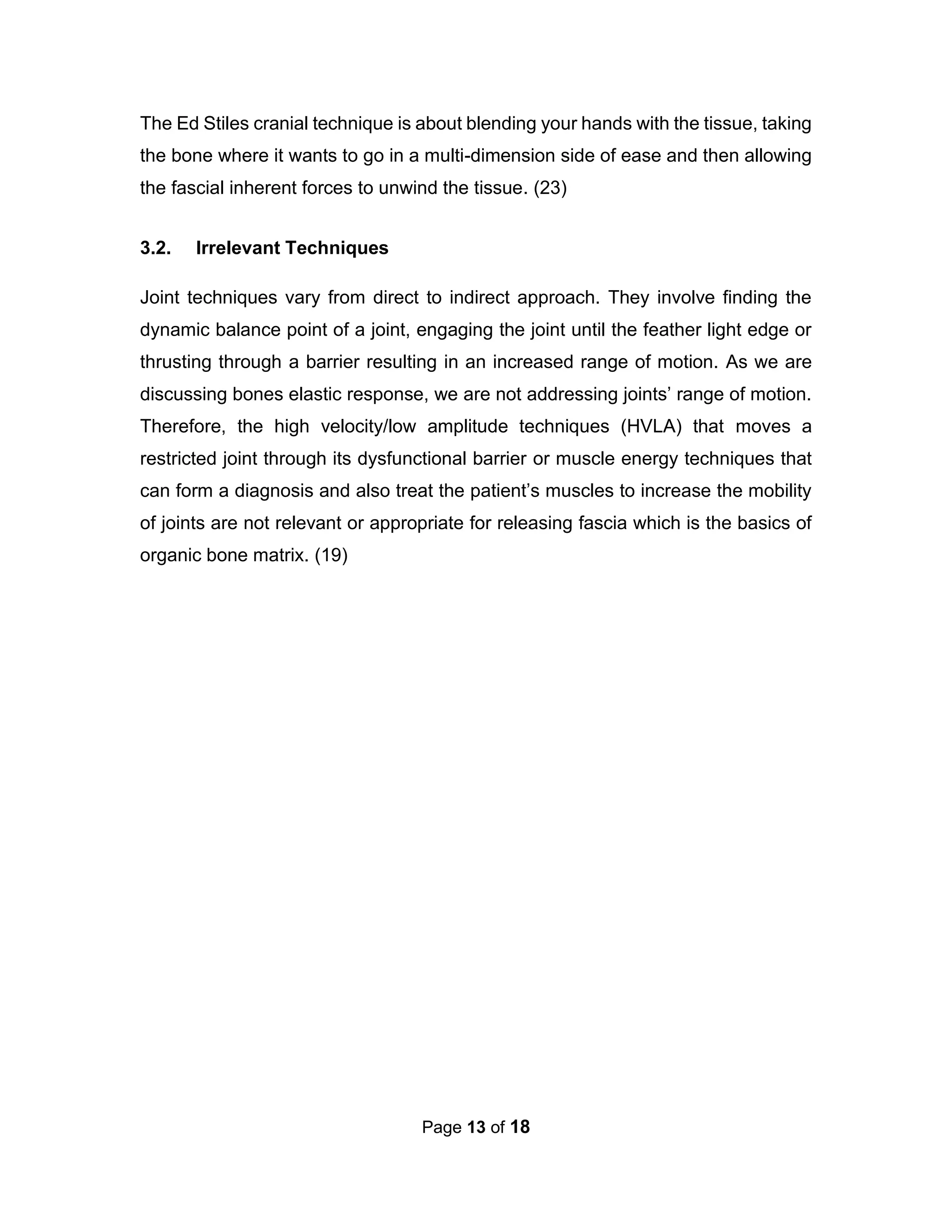
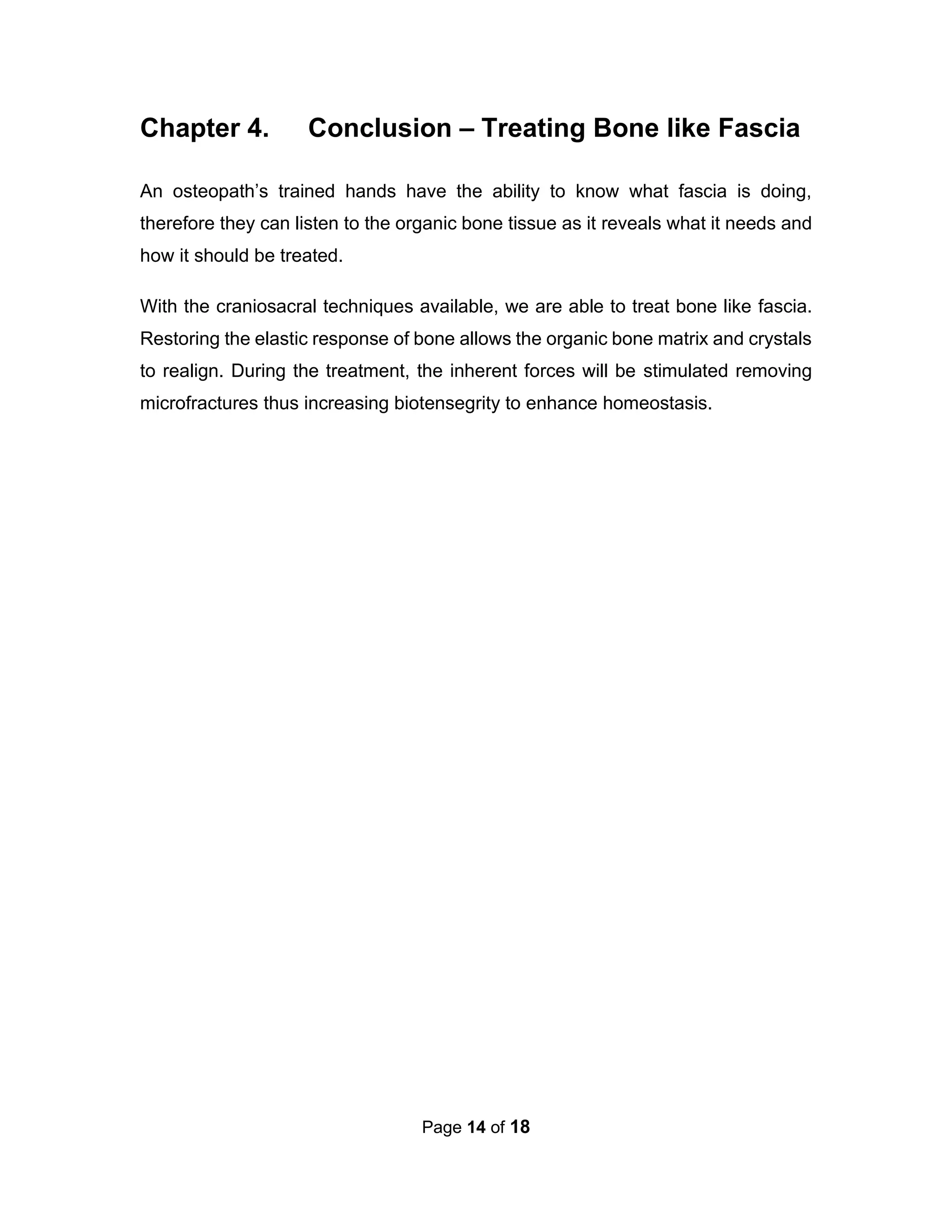
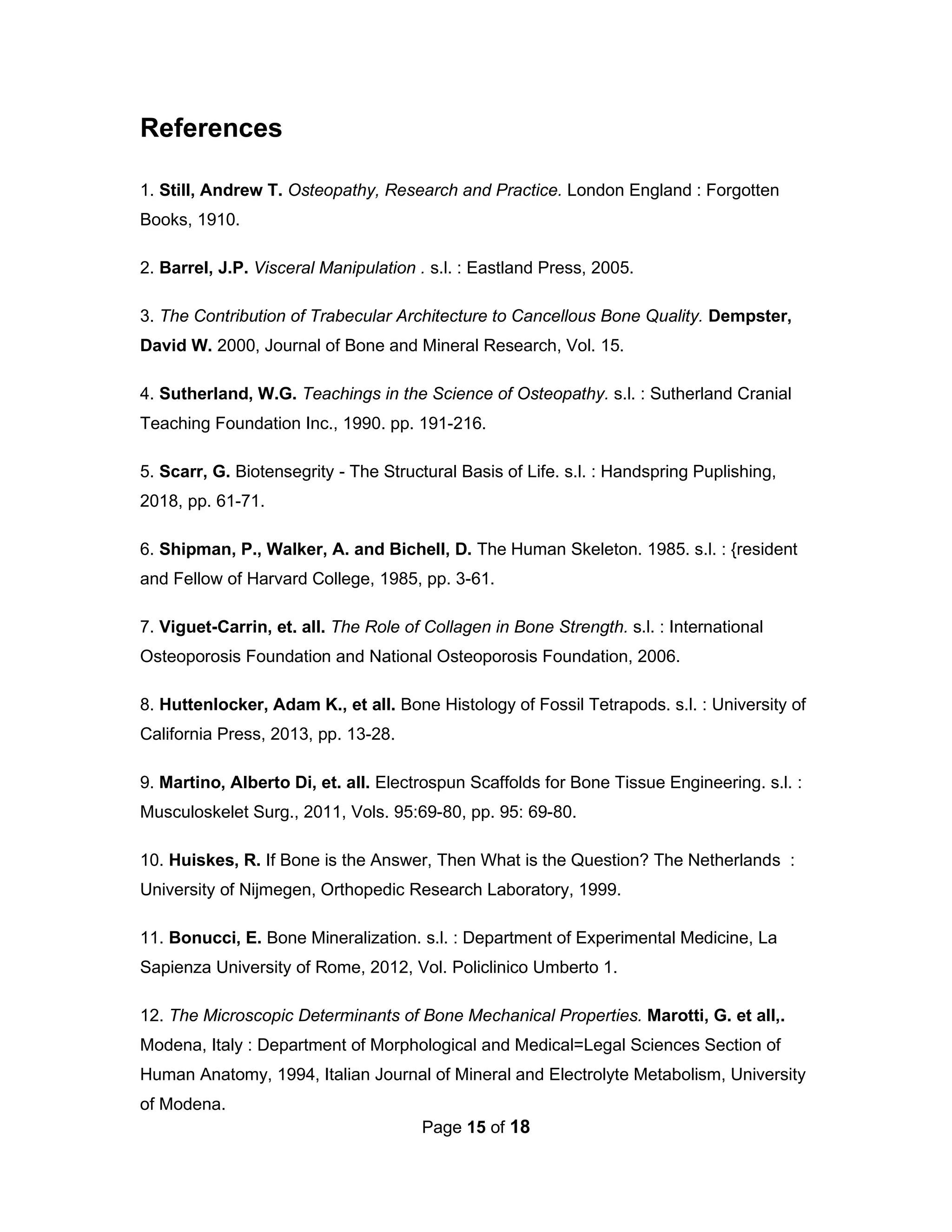
![Page 16 of 18
13. Rho, Jae-Young et. all. Mechanical Properties and the Heirarchical Structure of
Bone. Shrivenham : Medical Engineering and Physics - Department of Materials and
Medical Sciences, 1997.
14. Multiscale Mechanics and Optimizatino of Gastropod Shells. Yourdkhani, M., et. all.
s.l. : Elsevier Lim / Science Press, 2011, Journal of Bionic Engineering.
15. Contribution of Collagen and Mineral to the Elastic-Plastic Properties of Bone.
Bursein, A. Ph.D., et. all. No. 7, 1975, The Journal of Bone and Joint Surgery, Vol. 57A.
16. Mechanical Basis of Bone Strength; Influence of Bone Material, Bone Structure, and
Muscle Action. Hart, N.H et. all. 2017, Journal of Musculoskeletal.
17. Bankoff, Antonia Balla Pria. Human Musculoskeletal Biomechanics; Biomechanical
Characteristics of the Bone. [ed.] Dr. Tarun Goswami. s.l. : In Tech., 2012. pp. 61-85.
18. Sill, A. Philosophy of Osteopathy. 2015. ISBN 13:978-1517173678.
19. Chila, Anthony G., [ed.]. Foundations of Osteopathic Medicine. 3rd. s.l. : Lippincott
Williams & Wilkins, a Wolters Kluwer Business, 2011. pp. 1097-1098.
20. Chila, Anthony G., [ed.]. Foundations of Osteopathic Medicine. 3rd. s.l. : Lippincott
Williams and Wilkins, a Wolters Kluwer Business, 2011. pp. 698-699.
21. Liem, T. Cranial Osteopathy Principles & Practice. s.l. : Elsevier Churchill Livingston,
2004. pp. 1-23.
22. Selected Fascial Aspects of Osteopathic Practice. Tozzi, P. 2012, Journal of
Bodywork and Movement Therapies.
23. Stiles, E. www.omtsos.com/videos. [Online]
24. Sutherland and Sutherland, W.G. Teachings in the Science of Osteopathy. Reprint
. s.l. : Sutherland Cranial Teaching Foundation Inc., 1990.](https://image.slidesharecdn.com/vickikeamthesis-200430092827/75/Restoration-of-Bone-s-Elastic-Response-Using-Osteopathic-Techniques-18-2048.jpg)
